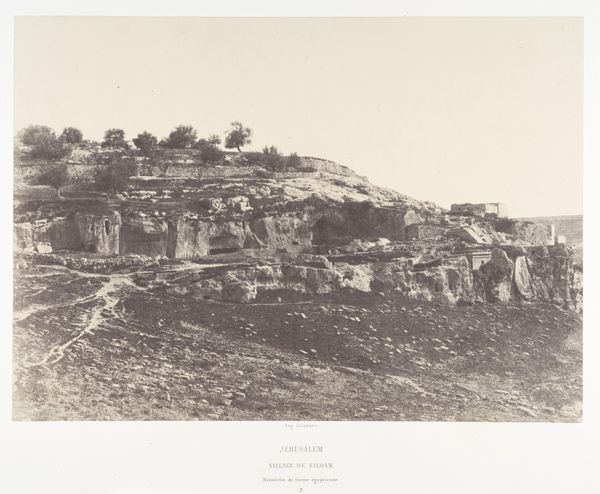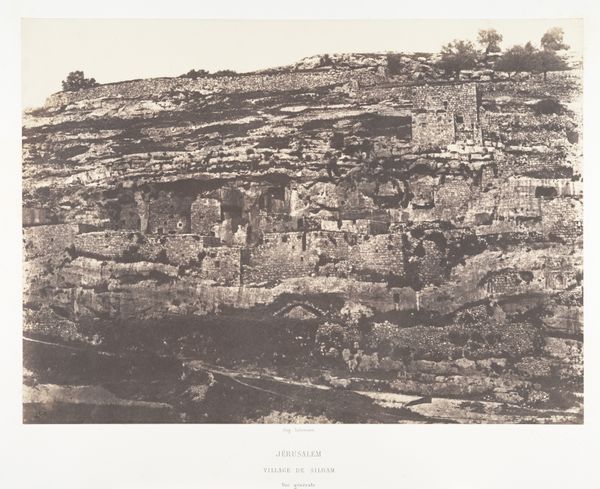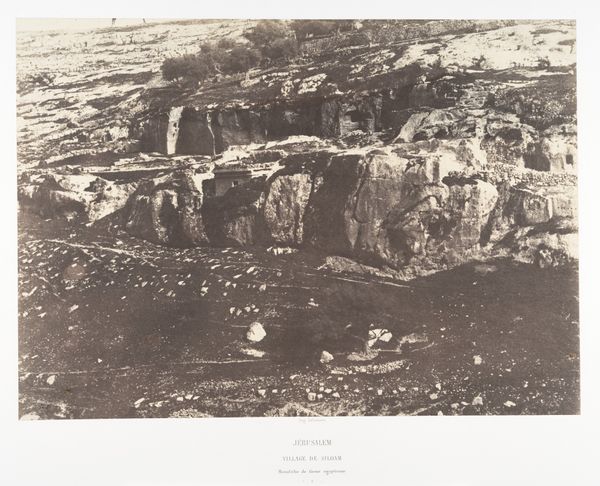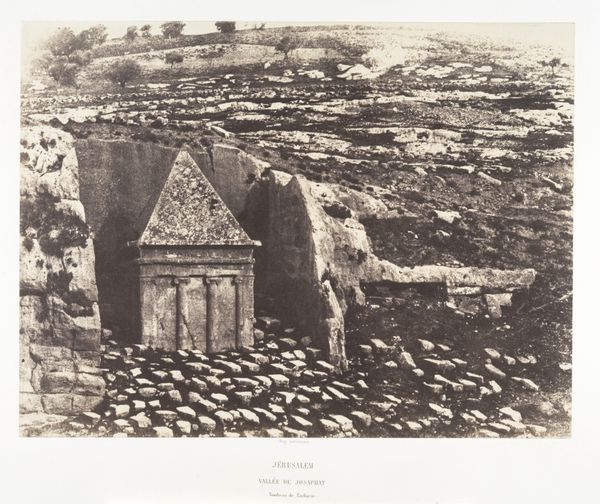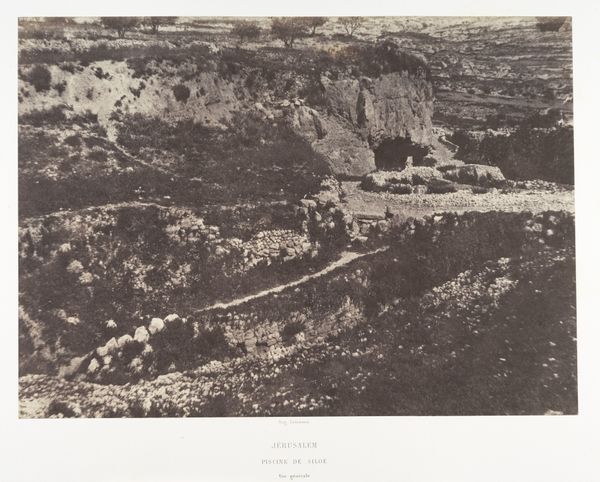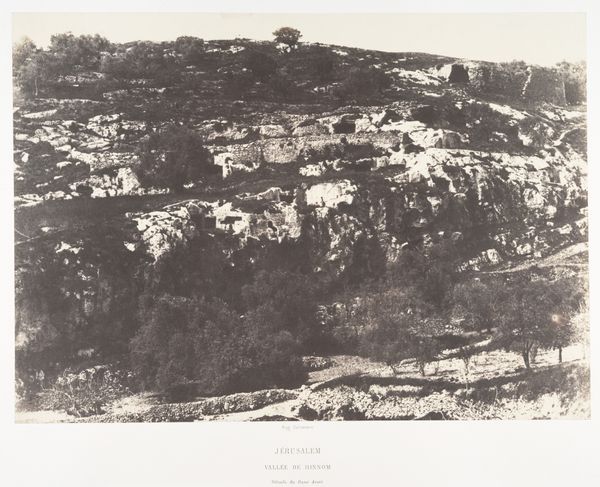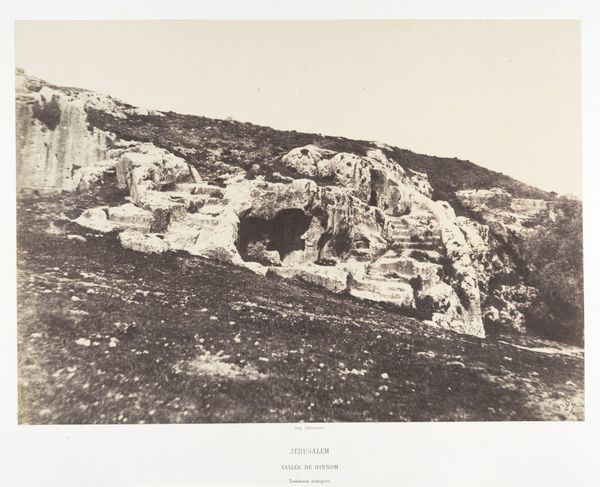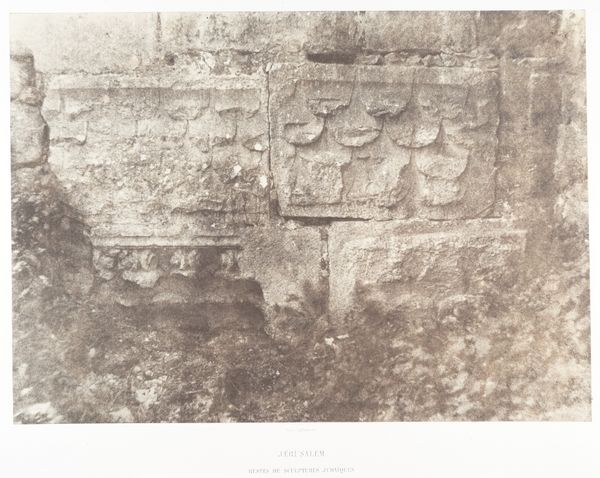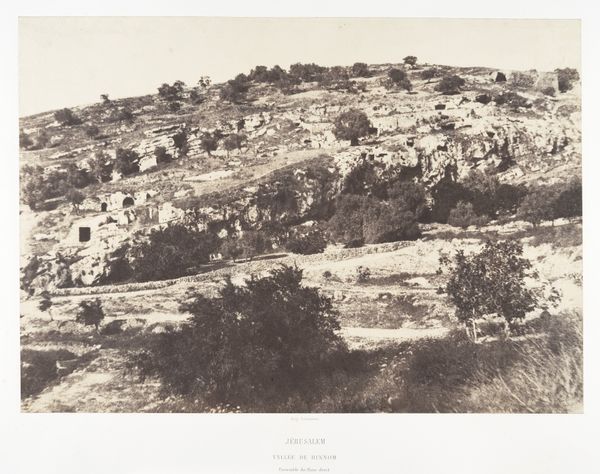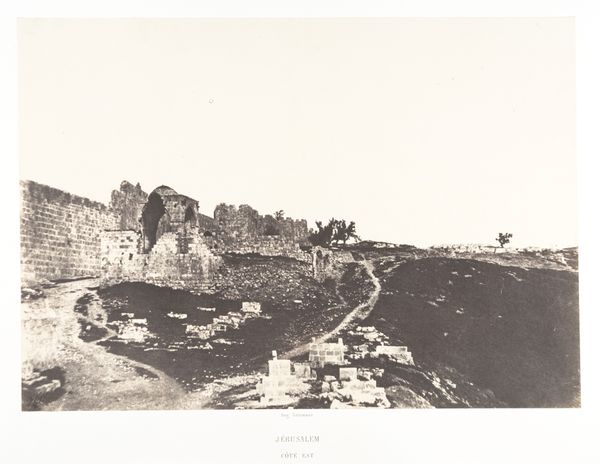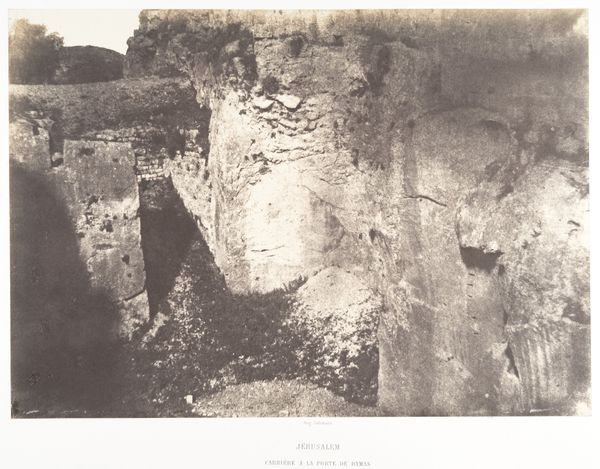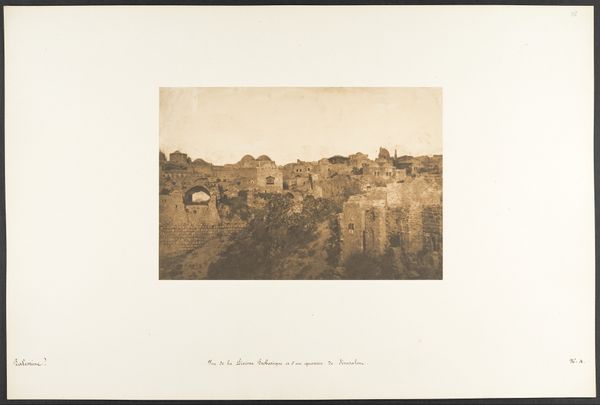
Jérusalem, Village de Siloam, Monolithe de forme égyptienne, 2 1854 - 1859
0:00
0:00
photography, site-specific, gelatin-silver-print, architecture
#
landscape
#
photography
#
ancient-mediterranean
#
site-specific
#
gelatin-silver-print
#
history-painting
#
architecture
Dimensions: Image: 23.1 x 32.4 cm (9 1/8 x 12 3/4 in.) Mount: 44.7 x 59.7 cm (17 5/8 x 23 1/2 in.)
Copyright: Public Domain
Editor: This gelatin-silver print is titled "Jerusalem, Village of Siloam, Monolith of Egyptian Form, 2" by Auguste Salzmann, created between 1854 and 1859. It feels… almost archaeological, like uncovering a forgotten moment. The stark landscape, that monolithic structure… what am I really looking at here? How would you interpret this work in its historical context? Curator: This photograph arrives at a fascinating intersection of colonial ambitions, archaeological fervor, and nascent photographic technology. Salzmann was commissioned to document the Holy Land. What do you notice about *how* he chose to depict Jerusalem? Editor: Well, there's a very clear focus on the architecture and landscape, almost devoid of people. And the "Egyptian Form" is highlighted in the title - the ancient roots seem to be key. Curator: Precisely. This relates directly to European interests in proving Biblical history through archaeological evidence. Photography was seen as objective truth at the time. So, what purpose did an image like this serve back then? Editor: I suppose it offered visual “proof” of these biblical narratives. It reinforces the Western perspective and claims to this territory, potentially overlooking the lived experiences and perspectives of those who actually lived there. Is that too cynical? Curator: Not at all. It prompts us to question whose story is being told, and who is being erased in the process of documenting "truth." We might ask who was commissioning these photos, who was consuming them, and what cultural narratives were thereby reinforced. Did this shift your perception? Editor: Absolutely. What initially struck me as a simple landscape photograph now speaks to a much more complex narrative of power, representation, and the politics of seeing. I now see that photography is never simply about recording; it’s always about interpretation.
Comments
No comments
Be the first to comment and join the conversation on the ultimate creative platform.
